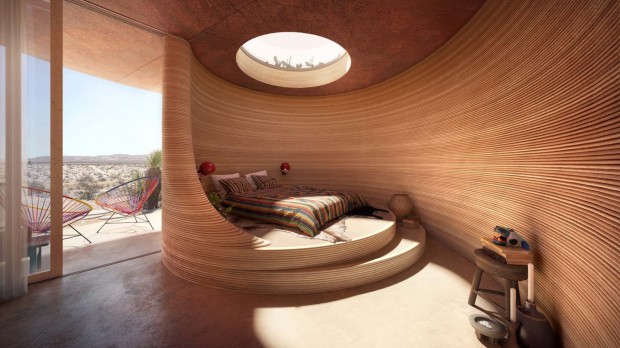Homes that are manufactured using 3D printing technology are beginning to gain popularity in the United States. On the other hand, this technological breakthrough will only be utilized in the house-building sector. According to reports, the first ever 3D-printed hotel in Texas will be built with the help of modern equipment, which is well-known for its excellent resistance to fire and water.

(Photo : Tomorrow’s World Today/ICON)
World's First 3D-Printed Hotel
On March 9, Hotelier Liz Lambert revealed that to make the ambitious new project possible; her team collaborated with Danish architecture firm Bjarke Ingels Group and 3D-printing construction firm Icon, which NASA presently contracts to design the initial interplanetary dwellings on Mars and the moon. Taking inspiration from proposed architectural designs for houses in outer space, El Cosmico, a renowned 21-acre glamping destination in Marfa, Texas, will begin construction on Sunday Homes, the first-ever 3D-printed hotel, this year.
To accommodate its existing glamping-style accommodations and its forthcoming 3D-printed structures, Lambert intends to relocate El Cosmico to a more expansive 60-acre site just north of Marfa. She noted that the hotel's facilities include an open-air bathhouse, a circular infinity pool, and common areas. Accordingly, the proposed structures consist of two, three, and four bedrooms and span an area of 1,200 to 2,200 square feet. Every unit features a view of the Davis Mountains in the surrounding area.
Moreover, Icon says that the cement used to make the walls, called Lavacrete, is resistant to fire, water, mold, and termites. They also mentioned that its buildings are sturdy enough to resist hurricanes and wildfires and that they are more than 350 % sturdier than what is needed by construction guidelines. In addition, the company claims that an airtight structure would reduce the amount of money spent on heating and cooling.
By reducing costs, time, and trash on-site, this form of construction reduces the amount of material disposed of in landfills. According to Architectural Digest, the hotel will consist of dome-shaped guest units and a community of Sunday Homes, each built using Vulcan 3D printers and providing a maximum of four bedrooms for sale.
Also Read: 7 Innovative and Energy-Efficient Building Projects Across the Globe
Why Are 3D-printed Structures Beneficial?
3D-printed buildings allow architects to experiment with distinctive designs without considerably increasing the project cost. Based on the explanation provided by the architect Bjarke Ingels, the assurance of 3D printing is that the machine that prints does not care how complicated the design seems. It is concerned with the amount of time it takes to print and the amount of material it will deploy, which means that you may construct a gorgeous dome house or a square box at the exact cost.
Additionally, 3D printing makes constructing buildings more quickly and with less human intervention possible. On the other hand, post-design still requires the participation of humans. For instance, the printer needs to be installed and upheld, and humans are required to supervise its digital operations, construct foundations, lay rebar, insulate the walls, and install windows, doors, and all of the mechanical, electrical, and plumbing systems.
Thus, the amount of material and energy required to produce 3D-printed houses is lower than that of conventionally built dwellings, making them more environmentally friendly.
Related Article: Groundbreaking Milestone: Space Coast Launches Construction Its First-Ever 3D-Printed Home







